A summary of the USSR space exploration, types of missiles and the most significant victories in this field. Part 1
Good afternoon, my dear reader. Your honored servant, like millions of boys born in the Soviet Union, dreamed of becoming an astronaut. I didn’t, because of my health and how strange it will not sound, growth. But the distant and unknown space attracts me to this day.
In this article, I want to tell you about such interesting and truly cosmic things, like boosters and the payload that they delivered to outer space.
Intensive space exploration began in the middle of the third five-year plan, after the end of the Second World War. There were active developments in many countries, but the main leaders were naturally the USSR and the USA. The championship in the successful launch and launch of the launch vehicle from PS-1 (the simplest satellite) to the near-earth orbit belonged to the USSR. Before the first successful launch, there were as many as six generations of rockets and only the seventh generation (R-7) was able to develop the first cosmic velocity of 8 km / s to overcome earth gravity and go into near-earth orbit. Space rockets took their origin from long-range ballistic missiles, by forcing the engine. First, I'll explain something to you. A rocket and a spaceship are two different things.
')

The rocket itself is just a vehicle for delivering a spacecraft to space. This is the first 30 meters in the picture. And the spacecraft is already mounted on the rocket at the top. However, the spacecraft may not be there, anything can be located there, from a satellite to a nuclear warhead. Which served as a great incentive and fear for the powers. The first successful launch and launch of a satellite into orbit meant a lot to the country. But most important of all, military advantage.
Launchers themselves, before the first successful launch have only alphanumeric designation. And only after fixing the successful withdrawal of the payload to a given height, get the name.
In the piggy bank of the erudite: "Sputnik" - became the intercontinental ballistic missile 8K71 (R-7), as well as the well-known ball with four antennas, which she brought into space. It happened on October 4, 1957.

Here is the very first PS-1 artificial satellite undergoing final inspection of all systems.

PS-1 in space. (the picture is not an original shot)
Within five months, another launch vehicle (8A91) Satellite 3 was launched. Such a short period in development is related to the fact that the first launch vehicles could lift a payload of several kilograms into space, and launch from PS-1 on board , was only the first goal against the USA. When the Americans accepted the fact that the USSR overtook them in the race for the first place in the spacewalk, they began with a double force to finish their missiles. The USSR needed to get ahead of the United States again and create a rocket that could take the payload into ton in space. And this is, after all, a real threat. Who knows how to fill such a rocket and send it to Washington? And Sputnik-3 was just the first rocket, with a payload of 1,300 kg.
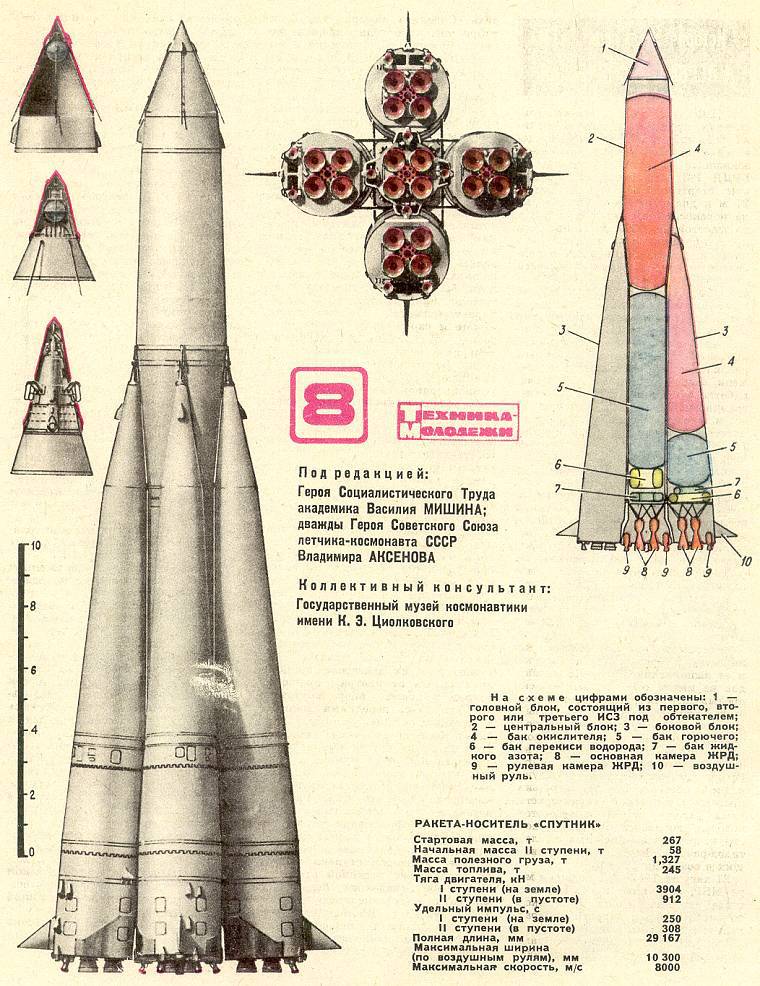
Booster "Sputnik". On the left, there are three satellites that he put into orbit of the earth.
In the US, and without it, there was nuclear hysteria. In kindergartens, schools, factories and factories, endless exercises began in case of a nuclear strike. This was the first time that the Americans had nothing to resist the USSR. Intercontinental ballistic missiles can fly to the USSR in 11 minutes. A nuclear charge from space can fly much faster. Of course, all this is too difficult to really think so. But fear has big eyes.



By the way, here's another thing to add to the erudite's piggy bank: How long do you think a rocket flies into space? Hour, two? Maybe half an hour?
To reach an altitude of 118 km, the rocket takes about 500 seconds, which is less than 10 minutes. The altitude of 118 km (100 km) is the so-called Karman line, where aeronautics becomes completely impossible. It is commonly believed that the flight is considered cosmic if the Karman line was overcome.
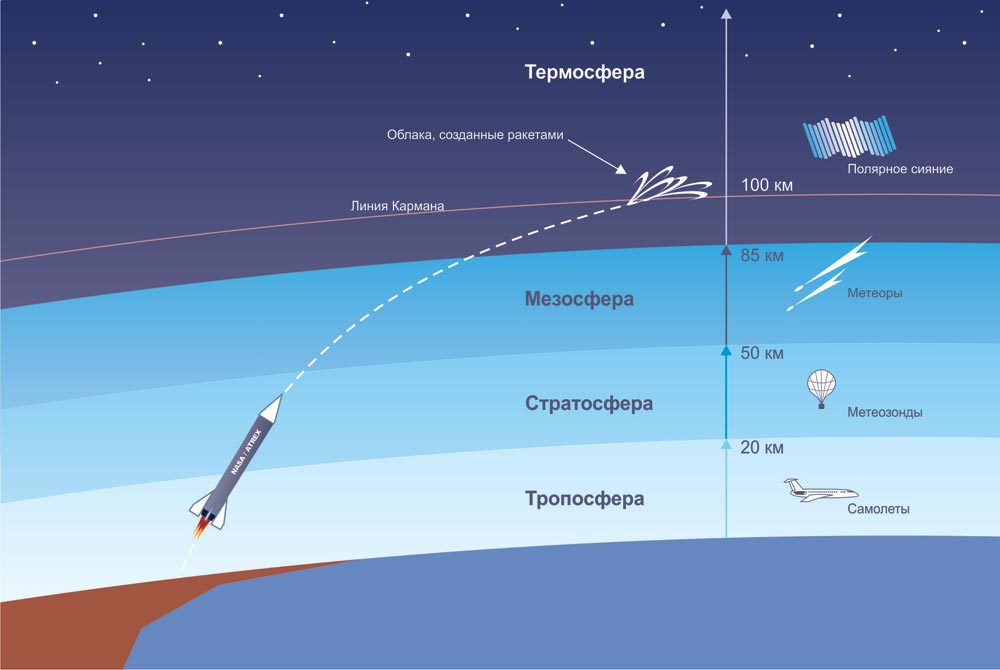
The rocket is true American, but this picture very well reflects the atmosphere of the earth and the transition points.
The third rocket was the "Moon". The USSR, seeing the futile attempts of the Americans, with their capitalist system, where the rocket is not built by the state, but by private companies that are interested in a greater degree of profit than in the space race, began to think about flying to the moon. And already on December 2, 1959, the launch vehicle (8K71), by equipping it with the third stage (block “E”), successfully set off towards our cause of ebbs and flows. They could have done it earlier, but as a result of the developing self-oscillations, the launch vehicles collapsed in flight at 102-104 seconds. And only after the hydrodampers units were installed in the fuel systems, the rocket successfully reached ... a heliocentric orbit and became the first artificial satellite of the sun. And all because of the neglect of the propagation time of the AMC radio command (automatic interplanetary station).
The next launch vehicle was Vostok 8K72. He flew to the moon in September 1959 and successfully threw the Luna-2 AMC and a couple of pentagons with symbols of the USSR there.
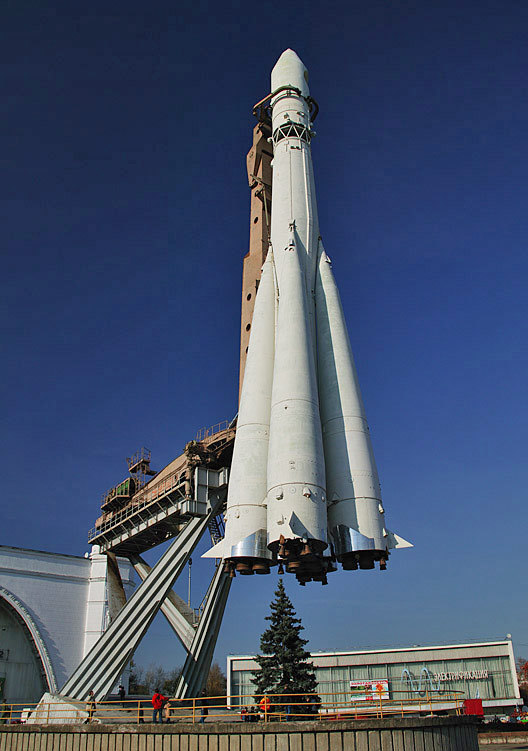
Booster Vostok standing on a pedestal at ENEA in Moscow.
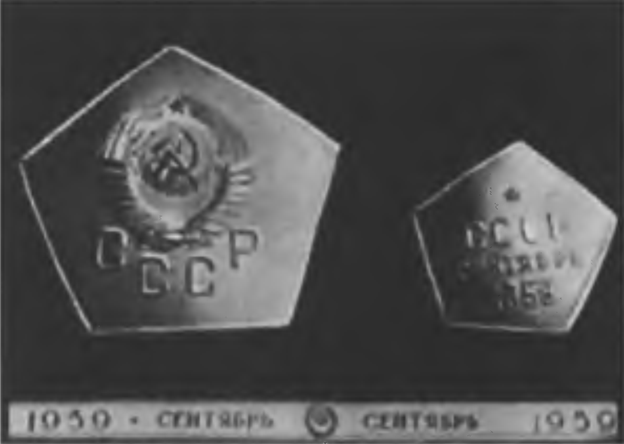
Two metal pentagons with the symbols of the USSR, sent together with AMC-2 to the moon.
(After this success, the Americans began to build a pavilion, where they decided to make a film about the landing on the moon. Joke.) On October 4, the same year, a similar rocket with AMC Luna-3 was launched, which for the first time in the history of mankind was able to photograph the reverse side The moon Making ordinary Americans cry, huddled in a corner. Since, unfortunately, the moon on the other hand is absolutely the same and there are no lunoparks and lunar cities on it.

Another side of the moon. 1959
Korolev, however, was in full swing planning to launch a man into space and therefore, in perfect secrecy, a life support system was being developed for man in space. Spacecraft of the Sputnik series launched on May 15, 1960. It was the first prototype of the satellite ship "Vostok", which was used for the first manned space flight.

Copy of the spacecraft "Sputnik"
The spacecraft "Sputnik-2" was not intended to return to earth. But still it was decided to send a living creature into orbit. It was a beautiful pooch named Laika. She was found in one of the dog shelters. Picked up on the principle - white, small, not pedigree, since it should not be picky about food. 10 dogs were selected, of which only three were selected and tested. But one waited for offspring, and the other had an innate curvature of the paws and was left as a technology. Scientists have developed a feeding system, twice a day, an excreta system, and performed a small operation to implant sensors. One was placed at the ribs and the other at the carotid artery to monitor breathing and pulse. Laika was sent to space on November 3, 1957. Having made incorrect calculations in thermal control, the temperature in the ship rose to 40 ° C and within 5 hours the dog died from overheating, although the flight was calculated for 7 days (oxygen supply of the ship). Laika was doomed from the very beginning. Many workers who participated in the experiment were morally suppressed for a very long time. The Western press reacted very negatively to this flight and TASS transmitted another seven days of information about the dog's state of health, although the dog was already dead.
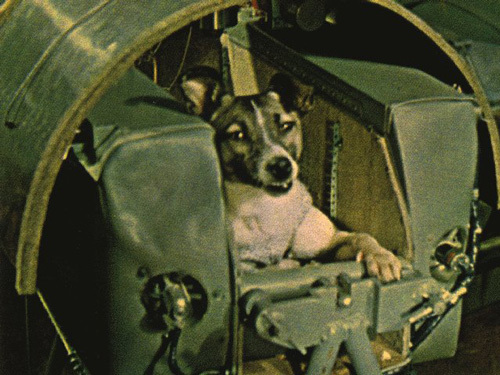
Laika. She was the first living creature to be in space, but without a chance to return.
The spacecraft Sputnik-4 was created to study the life support system and various situations related to the flight of man into space: a doll with a height of 164 cm and weight of 72 kg was sent on it. After four days of flight, the satellite deviated from the planned course and at the beginning of deceleration instead of entering the atmosphere was thrown into a higher orbit, after which it was no longer able to return to the atmosphere in the planned mode. Fragments of the satellite were found in the middle of the main street in the town of Manitevac in the US state of Wisconsin, which seemed to hint.

The remains of Sputnik-4 in the middle of the main street in the town of Manitevac in the US state of Wisconsin.

Satellite-4
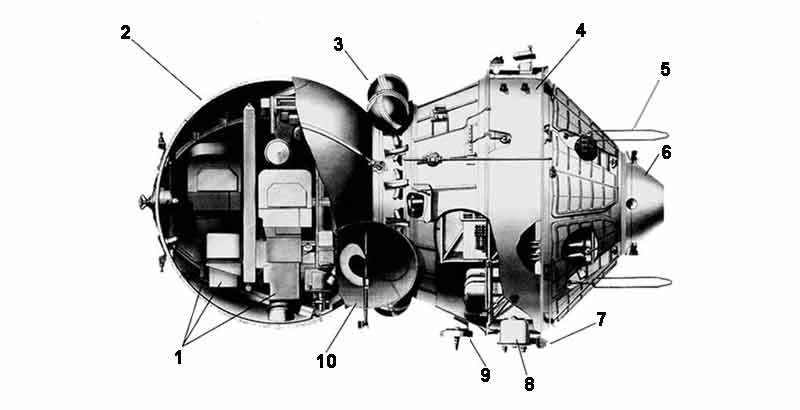
1. Photographic equipment; 2. The descent vehicle; 3. Cylinders orientation system; 4. Instrument compartment;
5. Antenna telemetry systems; 6. Brake propulsion system; 7. Sensor orientation for the sun;
8. Vertical builder; 9. Antenna radio software; 10. Antenna of a radio intelligence system
After this incident, every two months, there were launches on Vostok launch vehicles, any representatives of the earth’s fauna. In July, Chaika and Chanterelle dogs were launched, but unfortunately, On the 19th second of flight, the side-mounted block of the first stage collapsed at the launch vehicle, as a result of which it fell and exploded. The dogs Seagull and Chanterelle died.

The first dogs flew into space on a returnable spacecraft (descent vehicle).
Unfortunately, they were not destined to return.
And in August of the 60th, our two prides, Belochka and Strelochka, made a successful flight! But write the following information in your own box: Together with Belka and Strelka, there were 40 mice and 2 rats on board. They spent 1 day and 9 hours in space. Shortly after landing, Strelka gave birth to six healthy puppies. Nikita Sergeevich Khrushchev personally asked for one of them. He sent it as a gift to Caroline Kennedy, the daughter of US President John F. Kennedy.


Belka and Strelka, the first dogs that returned from space.
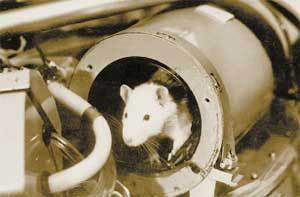
On board the "Sputnik-5" were not only dogs, but also such cute rats.
In December of the same year, was the launch of Sputnik-6. The crew of the ship was the Mushka and the Bee dogs, two guinea pigs, two white laboratory rats, 14 C57 black mice, seven hybrids from SBA and C57 mice, and five white outbred mice. A series of biological experiments that included conducting research on the possibility of flights of geophysical and space rockets of living beings, observation of the behavior of highly organized animals under such flights, as well as the study of complex phenomena in near-Earth space.
Scientists have studied the effects on animals of most physical and cosmic factors: altered gravity, vibration and overload, sound and noise stimuli of varying intensity, the effects of cosmic radiation, hypokinesia and hypodynamia. The flight lasted just over a day. On the 17th turn, due to the failure of the brake engine management system, the descent began in an off-design area. [1] It was decided to destroy the device by detonating the charge, in order to exclude an unplanned fall on foreign territory. All living creatures aboard died. Despite the fact that the device was destroyed, the mission objectives were fulfilled, the collected scientific data were transmitted to Earth using telemetry and television.
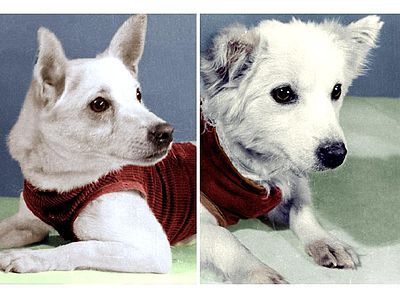
Dogs Mushka and Bee before space flight.
After this incident, there were two more successful ones and one not so much, the launch of the Vostok rockets. The Americans were indignant and every day they became more and more gloomy and more courageous and in every possible way intercepted the encrypted signals and tried to decipher them, but suffered the file.

Spy photo obtained by American intelligence, deciphering the broadcast code from Sputnik-6
On April 12, 1961, the USSR presented its final blow and sent Yura into space on the same launch vehicle, in the Vostok-1 spacecraft, which performed one revolution around the Earth and landed at 10 hours 55 minutes. To understand what a Vostok-1 spacecraft is, I will give its overall characteristics:
• Mass of the device - 4,725 tons;
• Diameter of the hermetic case - 2.2 m;
• Length (without antennas) - 4.4 m;
• Maximum diameter - 2.43 m
(As I already wrote above, I am not an astronaut, I just had the opportunity to sit in a similar apparatus on the ground.) This is a very inconvenient aircraft, I will tell you. With my height of 190cm, it was extremely uncomfortable to sit in a chair with a ladle, and even in a spacesuit. That is why Gagarin was selected for height, weight and health. (170/70 / excellent) But even Gagarin most likely felt uncomfortable in such a tiny capsule.
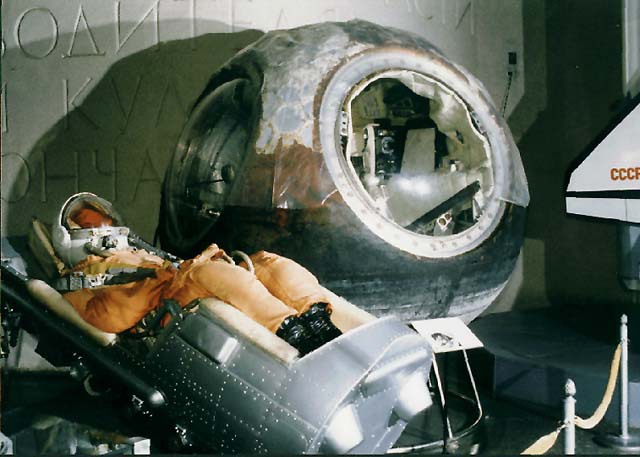
The lander "Vostok" and near the chair which is catapulted.
I want to note that the first human flight was fully automatic, but Yura could at any time switch the ship to manual control. For this, it was necessary to enter a special security code, to turn off automation, which was in a sealed envelope, which was in an egg, an egg in a duck, a duck .... in short before the flight, Korolev whispered this code to Yuri, wasn’t it enough? And everything was done for the sake of the fact that no one knew how the human nervous system would behave in space and whether it would go crazy. For this reason, the code for manual control was placed in an envelope that only a sane person could open.

Our universal pride!
I want to tell you some interesting details about the first flight of a person.
Gagarin was one more “Cedar”.

Missile launch always comes in uneven time.

At 9-57 Gagarin waved his hand personally to the President of America, flying over it.

Bus carrying astronauts to the rocket, blue.

The same bus.
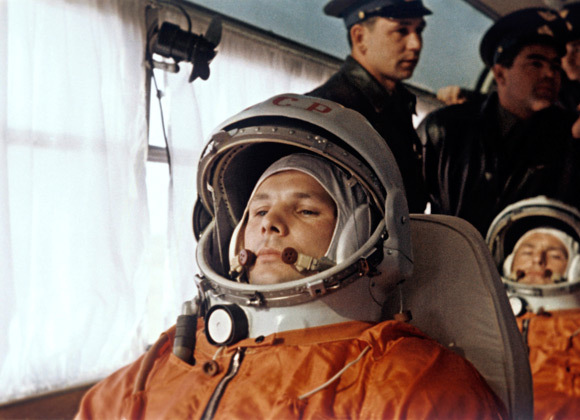
Gagarin could at any time abandon the flight, and it would be replaced by Titov, who in turn could be replaced by Nelyubov.
Pencils in space is better to tie. By the way, because of weightlessness, ordinary pens do not write in space.
During the descent of the spacecraft, due to problems in the brake-propulsion system, the ship began to rotate within 10 minutes with an amplitude of a complete revolution of 1 second. Gagarin, did not frighten the Queen and streamlined about the emergency situation, which speaks of his steel nerves. All descent vehicles of the Vostok type, sit down along a ballistic trajectory, which leads to overloads of up to 10 ji. In addition, the ship is very hot and crackles wildly in the lower atmosphere, which can put a lot of pressure on the psyche. When the ship reaches 7 km above the ground, an astronaut catapults, which descends separately from the descent vehicle on its own parachutes. What is the ejection ship aboard East? When the descent vehicle releases a parachute and the speed from 900 km / h gradually drops to 72 km / h, a pyrotechnic charge is triggered under the cosmonaut’s seat and the chair, along with the astronaut, whistles with a whistle into free fall. Then the astronaut should have time to detach from the chair and have to descend on the parachute to the ground. And this is a wild overload, constant fear and distrust of automation. After the ejection, Gagarin did not trigger the oxygen supply valve and he began to choke. After some time, the valve opened and Yura sighed deeply. When the parachute opened, it began to demolish straight into the Volga. Let me remind you that the water in April is a bit cold and he was again close to death, and his ability to maneuver with the help of lines was saved. I think it’s beyond words that he managed to get a bit of a bit over this hour. It was worth it. Yuri Alekseevich Gagarin, the most famous (contemporary) man on earth, of those who have ever lived.
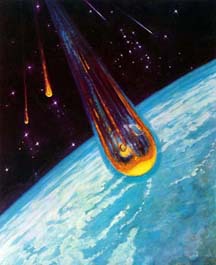
When descending, the capsule begins to burn in the lower layers of the atmosphere.

The parachute opens at a speed of 900km / h

The capsule is landing at a speed of 7m / s.
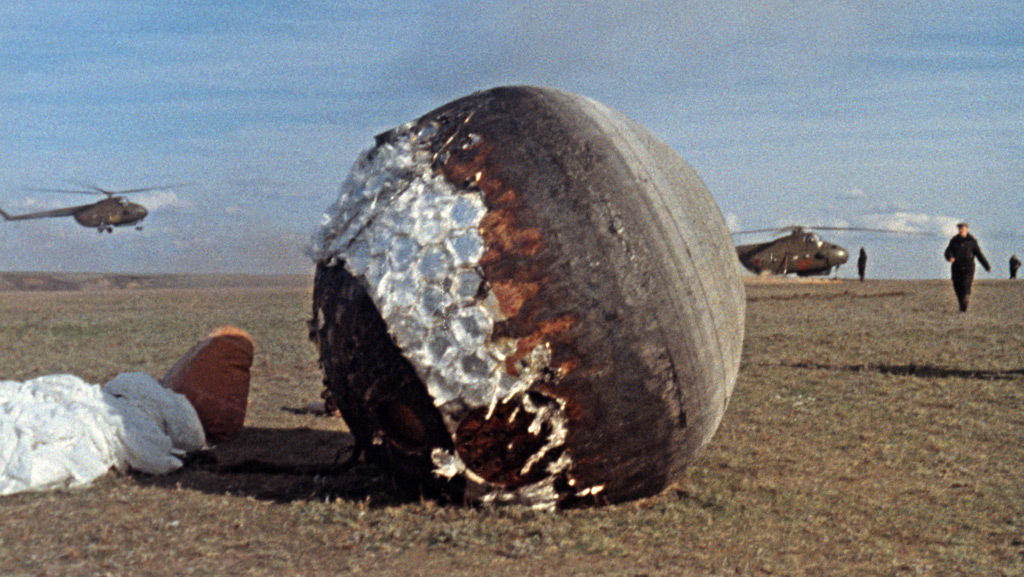
This is how the descent vehicle burns.

Prelaunch verification of all systems.

Korolev is not hiding excitement communicates with Gagarin during the flight.
The most famous person on the planet!
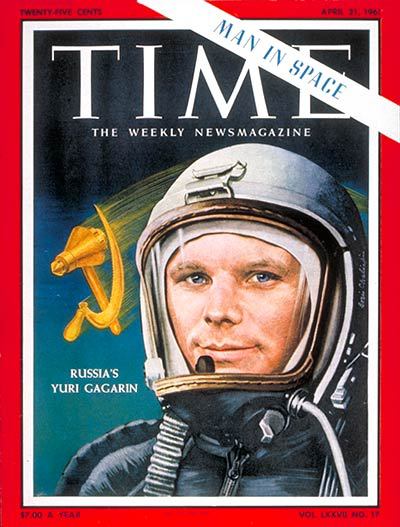
On the cover of Time magazine.
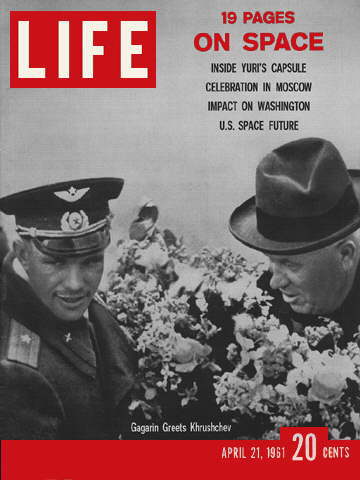
On the cover of Life magazine.
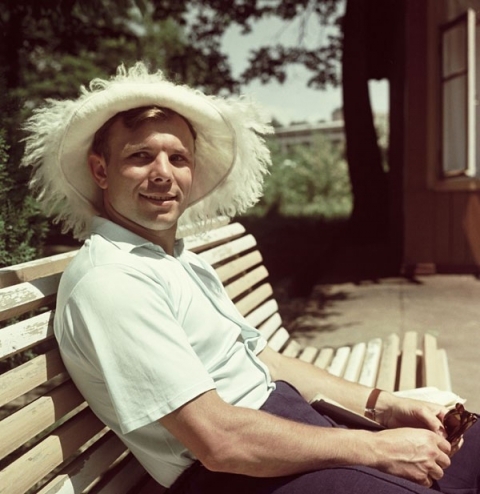
But he himself was very modest.
At this point I will finish the first part about the USSR space exploration. If you are interested in the continuation, I will be happy to write. Later I will talk about other countries, including the United States, which also did a lot in this area of activity.
In this article, I want to tell you about such interesting and truly cosmic things, like boosters and the payload that they delivered to outer space.
Intensive space exploration began in the middle of the third five-year plan, after the end of the Second World War. There were active developments in many countries, but the main leaders were naturally the USSR and the USA. The championship in the successful launch and launch of the launch vehicle from PS-1 (the simplest satellite) to the near-earth orbit belonged to the USSR. Before the first successful launch, there were as many as six generations of rockets and only the seventh generation (R-7) was able to develop the first cosmic velocity of 8 km / s to overcome earth gravity and go into near-earth orbit. Space rockets took their origin from long-range ballistic missiles, by forcing the engine. First, I'll explain something to you. A rocket and a spaceship are two different things.
')

The rocket itself is just a vehicle for delivering a spacecraft to space. This is the first 30 meters in the picture. And the spacecraft is already mounted on the rocket at the top. However, the spacecraft may not be there, anything can be located there, from a satellite to a nuclear warhead. Which served as a great incentive and fear for the powers. The first successful launch and launch of a satellite into orbit meant a lot to the country. But most important of all, military advantage.
Launchers themselves, before the first successful launch have only alphanumeric designation. And only after fixing the successful withdrawal of the payload to a given height, get the name.
In the piggy bank of the erudite: "Sputnik" - became the intercontinental ballistic missile 8K71 (R-7), as well as the well-known ball with four antennas, which she brought into space. It happened on October 4, 1957.

Here is the very first PS-1 artificial satellite undergoing final inspection of all systems.

PS-1 in space. (the picture is not an original shot)
Within five months, another launch vehicle (8A91) Satellite 3 was launched. Such a short period in development is related to the fact that the first launch vehicles could lift a payload of several kilograms into space, and launch from PS-1 on board , was only the first goal against the USA. When the Americans accepted the fact that the USSR overtook them in the race for the first place in the spacewalk, they began with a double force to finish their missiles. The USSR needed to get ahead of the United States again and create a rocket that could take the payload into ton in space. And this is, after all, a real threat. Who knows how to fill such a rocket and send it to Washington? And Sputnik-3 was just the first rocket, with a payload of 1,300 kg.

Booster "Sputnik". On the left, there are three satellites that he put into orbit of the earth.
In the US, and without it, there was nuclear hysteria. In kindergartens, schools, factories and factories, endless exercises began in case of a nuclear strike. This was the first time that the Americans had nothing to resist the USSR. Intercontinental ballistic missiles can fly to the USSR in 11 minutes. A nuclear charge from space can fly much faster. Of course, all this is too difficult to really think so. But fear has big eyes.



By the way, here's another thing to add to the erudite's piggy bank: How long do you think a rocket flies into space? Hour, two? Maybe half an hour?
To reach an altitude of 118 km, the rocket takes about 500 seconds, which is less than 10 minutes. The altitude of 118 km (100 km) is the so-called Karman line, where aeronautics becomes completely impossible. It is commonly believed that the flight is considered cosmic if the Karman line was overcome.

The rocket is true American, but this picture very well reflects the atmosphere of the earth and the transition points.
The third rocket was the "Moon". The USSR, seeing the futile attempts of the Americans, with their capitalist system, where the rocket is not built by the state, but by private companies that are interested in a greater degree of profit than in the space race, began to think about flying to the moon. And already on December 2, 1959, the launch vehicle (8K71), by equipping it with the third stage (block “E”), successfully set off towards our cause of ebbs and flows. They could have done it earlier, but as a result of the developing self-oscillations, the launch vehicles collapsed in flight at 102-104 seconds. And only after the hydrodampers units were installed in the fuel systems, the rocket successfully reached ... a heliocentric orbit and became the first artificial satellite of the sun. And all because of the neglect of the propagation time of the AMC radio command (automatic interplanetary station).
The next launch vehicle was Vostok 8K72. He flew to the moon in September 1959 and successfully threw the Luna-2 AMC and a couple of pentagons with symbols of the USSR there.

Booster Vostok standing on a pedestal at ENEA in Moscow.

Two metal pentagons with the symbols of the USSR, sent together with AMC-2 to the moon.
(After this success, the Americans began to build a pavilion, where they decided to make a film about the landing on the moon. Joke.) On October 4, the same year, a similar rocket with AMC Luna-3 was launched, which for the first time in the history of mankind was able to photograph the reverse side The moon Making ordinary Americans cry, huddled in a corner. Since, unfortunately, the moon on the other hand is absolutely the same and there are no lunoparks and lunar cities on it.

Another side of the moon. 1959
Korolev, however, was in full swing planning to launch a man into space and therefore, in perfect secrecy, a life support system was being developed for man in space. Spacecraft of the Sputnik series launched on May 15, 1960. It was the first prototype of the satellite ship "Vostok", which was used for the first manned space flight.

Copy of the spacecraft "Sputnik"
The spacecraft "Sputnik-2" was not intended to return to earth. But still it was decided to send a living creature into orbit. It was a beautiful pooch named Laika. She was found in one of the dog shelters. Picked up on the principle - white, small, not pedigree, since it should not be picky about food. 10 dogs were selected, of which only three were selected and tested. But one waited for offspring, and the other had an innate curvature of the paws and was left as a technology. Scientists have developed a feeding system, twice a day, an excreta system, and performed a small operation to implant sensors. One was placed at the ribs and the other at the carotid artery to monitor breathing and pulse. Laika was sent to space on November 3, 1957. Having made incorrect calculations in thermal control, the temperature in the ship rose to 40 ° C and within 5 hours the dog died from overheating, although the flight was calculated for 7 days (oxygen supply of the ship). Laika was doomed from the very beginning. Many workers who participated in the experiment were morally suppressed for a very long time. The Western press reacted very negatively to this flight and TASS transmitted another seven days of information about the dog's state of health, although the dog was already dead.

Laika. She was the first living creature to be in space, but without a chance to return.
The spacecraft Sputnik-4 was created to study the life support system and various situations related to the flight of man into space: a doll with a height of 164 cm and weight of 72 kg was sent on it. After four days of flight, the satellite deviated from the planned course and at the beginning of deceleration instead of entering the atmosphere was thrown into a higher orbit, after which it was no longer able to return to the atmosphere in the planned mode. Fragments of the satellite were found in the middle of the main street in the town of Manitevac in the US state of Wisconsin, which seemed to hint.

The remains of Sputnik-4 in the middle of the main street in the town of Manitevac in the US state of Wisconsin.

Satellite-4

1. Photographic equipment; 2. The descent vehicle; 3. Cylinders orientation system; 4. Instrument compartment;
5. Antenna telemetry systems; 6. Brake propulsion system; 7. Sensor orientation for the sun;
8. Vertical builder; 9. Antenna radio software; 10. Antenna of a radio intelligence system
After this incident, every two months, there were launches on Vostok launch vehicles, any representatives of the earth’s fauna. In July, Chaika and Chanterelle dogs were launched, but unfortunately, On the 19th second of flight, the side-mounted block of the first stage collapsed at the launch vehicle, as a result of which it fell and exploded. The dogs Seagull and Chanterelle died.

The first dogs flew into space on a returnable spacecraft (descent vehicle).
Unfortunately, they were not destined to return.
And in August of the 60th, our two prides, Belochka and Strelochka, made a successful flight! But write the following information in your own box: Together with Belka and Strelka, there were 40 mice and 2 rats on board. They spent 1 day and 9 hours in space. Shortly after landing, Strelka gave birth to six healthy puppies. Nikita Sergeevich Khrushchev personally asked for one of them. He sent it as a gift to Caroline Kennedy, the daughter of US President John F. Kennedy.


Belka and Strelka, the first dogs that returned from space.

On board the "Sputnik-5" were not only dogs, but also such cute rats.
In December of the same year, was the launch of Sputnik-6. The crew of the ship was the Mushka and the Bee dogs, two guinea pigs, two white laboratory rats, 14 C57 black mice, seven hybrids from SBA and C57 mice, and five white outbred mice. A series of biological experiments that included conducting research on the possibility of flights of geophysical and space rockets of living beings, observation of the behavior of highly organized animals under such flights, as well as the study of complex phenomena in near-Earth space.
Scientists have studied the effects on animals of most physical and cosmic factors: altered gravity, vibration and overload, sound and noise stimuli of varying intensity, the effects of cosmic radiation, hypokinesia and hypodynamia. The flight lasted just over a day. On the 17th turn, due to the failure of the brake engine management system, the descent began in an off-design area. [1] It was decided to destroy the device by detonating the charge, in order to exclude an unplanned fall on foreign territory. All living creatures aboard died. Despite the fact that the device was destroyed, the mission objectives were fulfilled, the collected scientific data were transmitted to Earth using telemetry and television.

Dogs Mushka and Bee before space flight.
After this incident, there were two more successful ones and one not so much, the launch of the Vostok rockets. The Americans were indignant and every day they became more and more gloomy and more courageous and in every possible way intercepted the encrypted signals and tried to decipher them, but suffered the file.

Spy photo obtained by American intelligence, deciphering the broadcast code from Sputnik-6
On April 12, 1961, the USSR presented its final blow and sent Yura into space on the same launch vehicle, in the Vostok-1 spacecraft, which performed one revolution around the Earth and landed at 10 hours 55 minutes. To understand what a Vostok-1 spacecraft is, I will give its overall characteristics:
• Mass of the device - 4,725 tons;
• Diameter of the hermetic case - 2.2 m;
• Length (without antennas) - 4.4 m;
• Maximum diameter - 2.43 m
(As I already wrote above, I am not an astronaut, I just had the opportunity to sit in a similar apparatus on the ground.) This is a very inconvenient aircraft, I will tell you. With my height of 190cm, it was extremely uncomfortable to sit in a chair with a ladle, and even in a spacesuit. That is why Gagarin was selected for height, weight and health. (170/70 / excellent) But even Gagarin most likely felt uncomfortable in such a tiny capsule.

The lander "Vostok" and near the chair which is catapulted.
I want to note that the first human flight was fully automatic, but Yura could at any time switch the ship to manual control. For this, it was necessary to enter a special security code, to turn off automation, which was in a sealed envelope, which was in an egg, an egg in a duck, a duck .... in short before the flight, Korolev whispered this code to Yuri, wasn’t it enough? And everything was done for the sake of the fact that no one knew how the human nervous system would behave in space and whether it would go crazy. For this reason, the code for manual control was placed in an envelope that only a sane person could open.

Our universal pride!
I want to tell you some interesting details about the first flight of a person.
Gagarin was one more “Cedar”.

Missile launch always comes in uneven time.

At 9-57 Gagarin waved his hand personally to the President of America, flying over it.

Bus carrying astronauts to the rocket, blue.

The same bus.

Gagarin could at any time abandon the flight, and it would be replaced by Titov, who in turn could be replaced by Nelyubov.
Pencils in space is better to tie. By the way, because of weightlessness, ordinary pens do not write in space.
During the descent of the spacecraft, due to problems in the brake-propulsion system, the ship began to rotate within 10 minutes with an amplitude of a complete revolution of 1 second. Gagarin, did not frighten the Queen and streamlined about the emergency situation, which speaks of his steel nerves. All descent vehicles of the Vostok type, sit down along a ballistic trajectory, which leads to overloads of up to 10 ji. In addition, the ship is very hot and crackles wildly in the lower atmosphere, which can put a lot of pressure on the psyche. When the ship reaches 7 km above the ground, an astronaut catapults, which descends separately from the descent vehicle on its own parachutes. What is the ejection ship aboard East? When the descent vehicle releases a parachute and the speed from 900 km / h gradually drops to 72 km / h, a pyrotechnic charge is triggered under the cosmonaut’s seat and the chair, along with the astronaut, whistles with a whistle into free fall. Then the astronaut should have time to detach from the chair and have to descend on the parachute to the ground. And this is a wild overload, constant fear and distrust of automation. After the ejection, Gagarin did not trigger the oxygen supply valve and he began to choke. After some time, the valve opened and Yura sighed deeply. When the parachute opened, it began to demolish straight into the Volga. Let me remind you that the water in April is a bit cold and he was again close to death, and his ability to maneuver with the help of lines was saved. I think it’s beyond words that he managed to get a bit of a bit over this hour. It was worth it. Yuri Alekseevich Gagarin, the most famous (contemporary) man on earth, of those who have ever lived.

When descending, the capsule begins to burn in the lower layers of the atmosphere.

The parachute opens at a speed of 900km / h

The capsule is landing at a speed of 7m / s.

This is how the descent vehicle burns.

Prelaunch verification of all systems.

Korolev is not hiding excitement communicates with Gagarin during the flight.
The most famous person on the planet!

On the cover of Time magazine.

On the cover of Life magazine.

But he himself was very modest.
At this point I will finish the first part about the USSR space exploration. If you are interested in the continuation, I will be happy to write. Later I will talk about other countries, including the United States, which also did a lot in this area of activity.
Source: https://habr.com/ru/post/226629/
All Articles